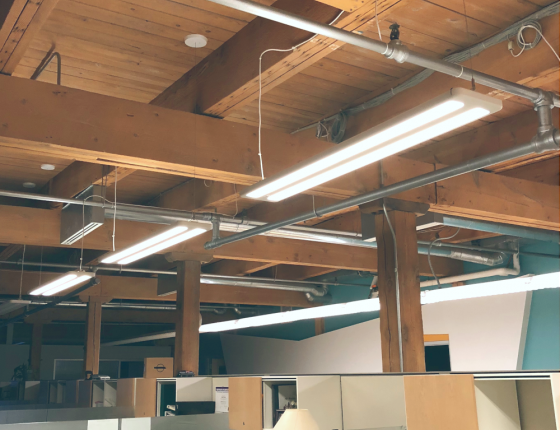Update: July 2022
This spring, the project team presented on this topic in a webinar hosted by the Conservation Applied Research and Development (CARD) program. So far, their findings indicate that PoE systems have the potential to be more efficient than AC systems to manage building energy systems. Most end uses in offices are electronic devices that are natively low-voltage DC, such as LED lamps and DC power supplies, which makes PoE an optimal management system as there is less need to convert between AC and DC. Though AC-powered network systems also have standby modes, the nature of PoE systems allow users to monitor energy loads in a way that can’t be accomplished by an AC system.
Overview
Power over Ethernet (PoE) technologies are currently ubiquitous in offices in the form of phones, access points, and IP cameras and managed by on-site IT staff. As power capabilities have increased, PoE devices are now being integrated across additional building systems, including lighting, plug loads, and HVAC controls, as a tool to improve buildings’ energy efficiency.
PoE devices are connected to network switches, which fall under current IT services. This provides an energy management capability for sites where building automation systems (BASs) are not in place. These energy saving functions are overseen by IT staff who perform these types of tasks for current PoE technologies.
Some current challenges with PoE energy saving initiatives include helping stakeholders overcome the barriers to implementing these technologies and clearly demonstrating the energy saving benefits of these PoE systems to make adoption worth pursuing.
This project will demonstrate the use of IT network switches to provide energy management opportunities where they typically are not available. Researchers will look at how PoE, through the use of network switches, can power and control lighting, plug loads, and HVAC, if appropriate, at a number of sites to understand:
- The technical and economic barriers and opportunities may exist to adoption of these existing technologies for energy saving purposes
- The feasibility of implementing these PoE technologies within standard design/construction practices and under existing commercial codes
- The energy and non-energy benefits of these technologies and systems
The intended impact of the project will be:
- To guide architects and engineers on the best practices in delivering these systems to their clients and
- To enable utilities in offering programs that will encourage and facilitate their adoption
Related Reports & Case Studies
